Uninstall AES-NI virus (Feb 2017 updated) - Bonus: Decryption Steps
AES-NI virus Removal Guide
Description of AES-NI ransomware
How dangerous is AES-NI ransomware virus?
AES-NI virus is categorised as ransomware. This type of cyber threat is known to encrypt files on the targeted computer and ask for the ransom. The malware belongs to the AES256 ransomware family and targets the most popular file types, such as MS Office documents, audio, video files, etc. For data encryption, AES-NI ransomware uses AES-256 algorithm which is nearly impossible to break without the specific decryption key. All damaged files have the .aes256 file extension which prevents victims from opening and using them. The purpose of the virus is to take victim’s personal files to hostage and convince him or her to pay the ransom. Sadly, AES-NI removal won’t help to get back the files; so, people who do not have data backups might be interested in this shady deal.
Victims should contact the criminals via aes-ni@protonmail.com or aes-ni@tuta.io email address to learn how much Bitcoins their files are worth. When the transaction is made, hackers should provide the decryption key which is supposed to encrypt files corrupted by AES-NI malware. However, contacting and negotiating with cyber criminals is never a good idea. No one can guarantee that following their orders, and you will get back your files. Cyber criminals may take your money and disappear, or provide inactive or malicious decryption software. As a result, you may encounter another ransomware attack and be asked to pay even more money. However, even if you get the decryption key and rescue your files, your paid ransom is a motivation and sponsorship to hackers to continue their illegal projects. Therefore, before paying the ransom, you should think not only about your personal wealth but also about whole online community. We highly suggest installing FortectIntego and concentrating on AES-NI removal first. When your PC is virus-free, you can try additional data recovery methods to restore your files.

How do hackers spread the ransomware?
Developers of AES-NI virus do not experiment and use traditional distribution strategies. Indeed, why risk with new methods when old techniques still work effectively? The most popular way to spread ransomware stays malicious spam emails and their attachments. Nowadays criminals mask malicious file and spread it as safe looking MS Word, PDF or other popular file formats. What is more, they pretend to be representatives from various organisations, institutions or retailers and trick victims into opening fake invoice, statement or other important documents. Sadly, rushing to open received file may lead to AES-NI hijack. What is more, the virus might be hiding under misleading ads that often suggests installing bogus security software or its updates. Don’t forget that online ads are not the safe source for downloads!
What to do after AES-NI virus attack?
The majority of victims want to take care of their lost files after ransomware attack. However, it’s not the primary task. AES-NI removal should be a priority because while malware resides on the system, it can encrypt restored files again and again. Therefore, do not waste your time and start virus elimination procedure. First of all, you have to install malware removal tool, for example, FortectIntego or SpyHunter 5Combo Cleaner. We want to warn that ransomware can stop you from completing this step. In this situation, you have to reboot your PC to the Safe Mode as shown in the instructions below. Once you install the program, update it and run a full system scan. Automatic AES-NI removal should be completed in the several minutes. When the virus is gone, you can restore your files from backups or use additional data recovery methods.
Getting rid of AES-NI virus. Follow these steps
In-depth guide for the AES-NI elimination
In order to remove AES-NI virus from the computer automatically, you may need to reboot your computer to the Safe Mode by following these steps:
Important! →
The elimination guide can appear too difficult if you are not tech-savvy. It requires some knowledge of computer processes since it includes system changes that need to be performed correctly. You need to take steps carefully and follow the guide avoiding any issues created due to improper setting changes. Automatic methods might suit you better if you find the guide too difficult.
Step 1. Launch Safe Mode with Networking
Safe Mode environment offers better results of manual virus removal
Windows 7 / Vista / XP
- Go to Start.
- Choose Shutdown, then Restart, and OK.
- When your computer boots, start pressing the F8 button (if that does not work, try F2, F12, Del, etc. – it all depends on your motherboard model) a few times until you see the Advanced Boot Options window.
- Select Safe Mode with Networking from the list.
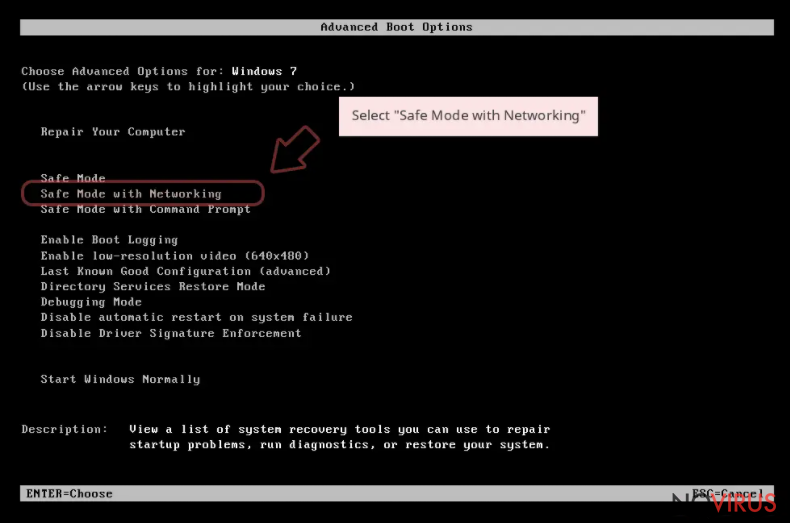
Windows 10 / Windows 8
- Right-click the Start button and choose Settings.
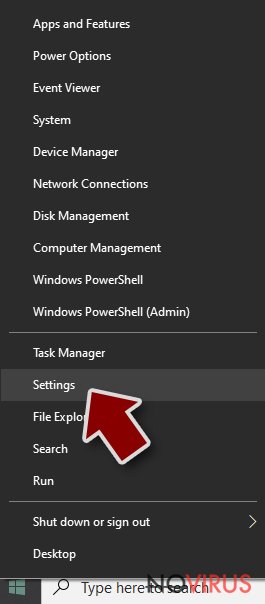
- Scroll down to find Update & Security.
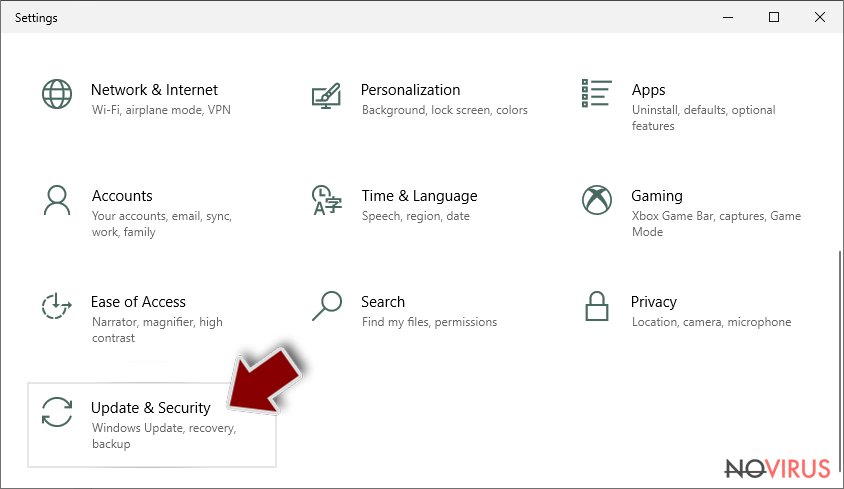
- On the left, pick Recovery.
- Scroll to find Advanced Startup section.
- Click Restart now.
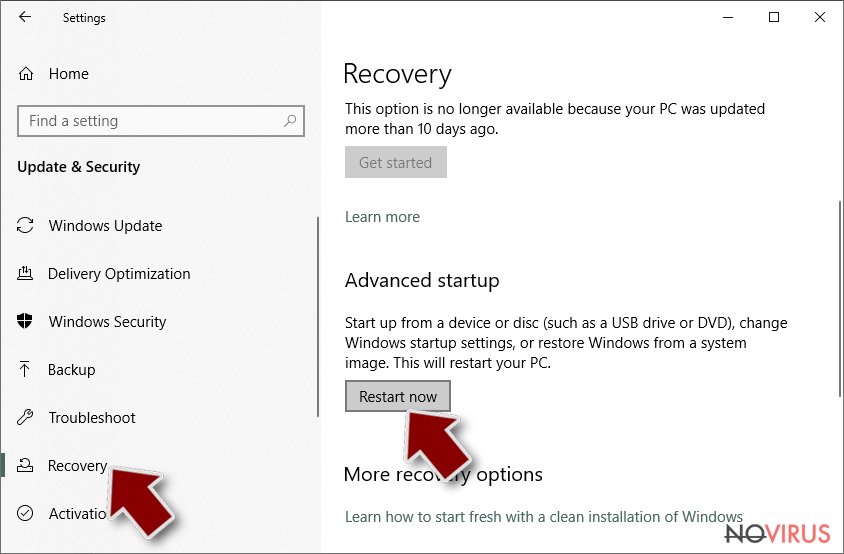
- Choose Troubleshoot.
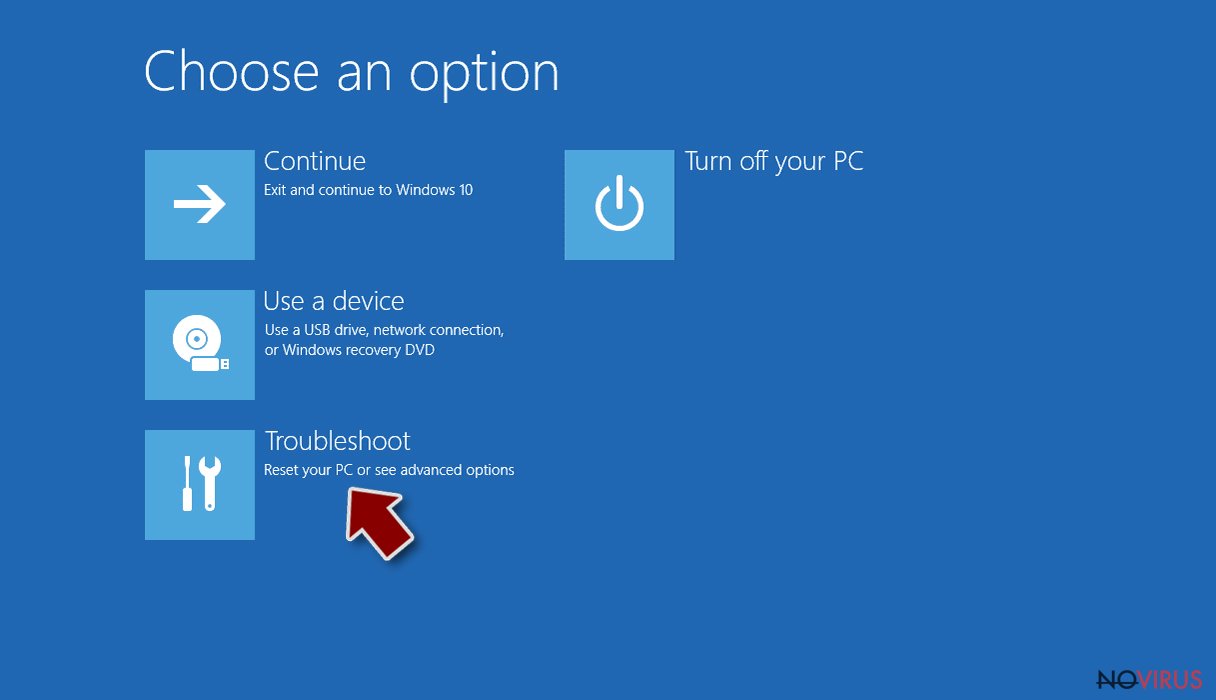
- Go to Advanced options.
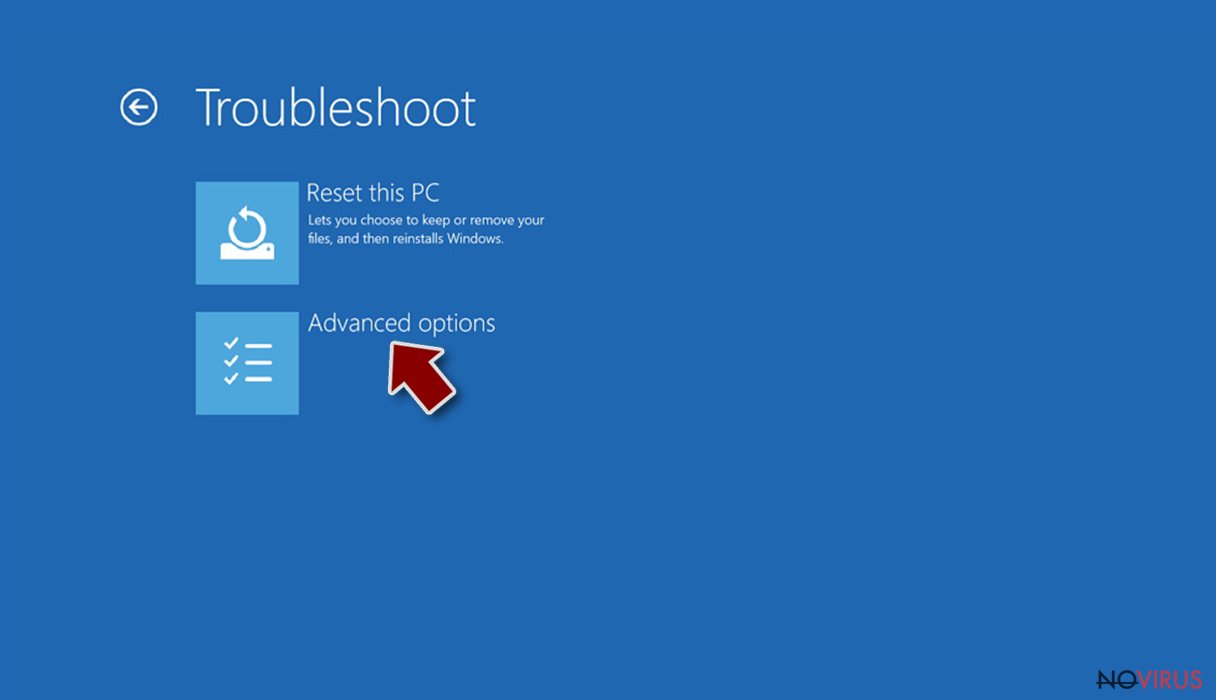
- Select Startup Settings.
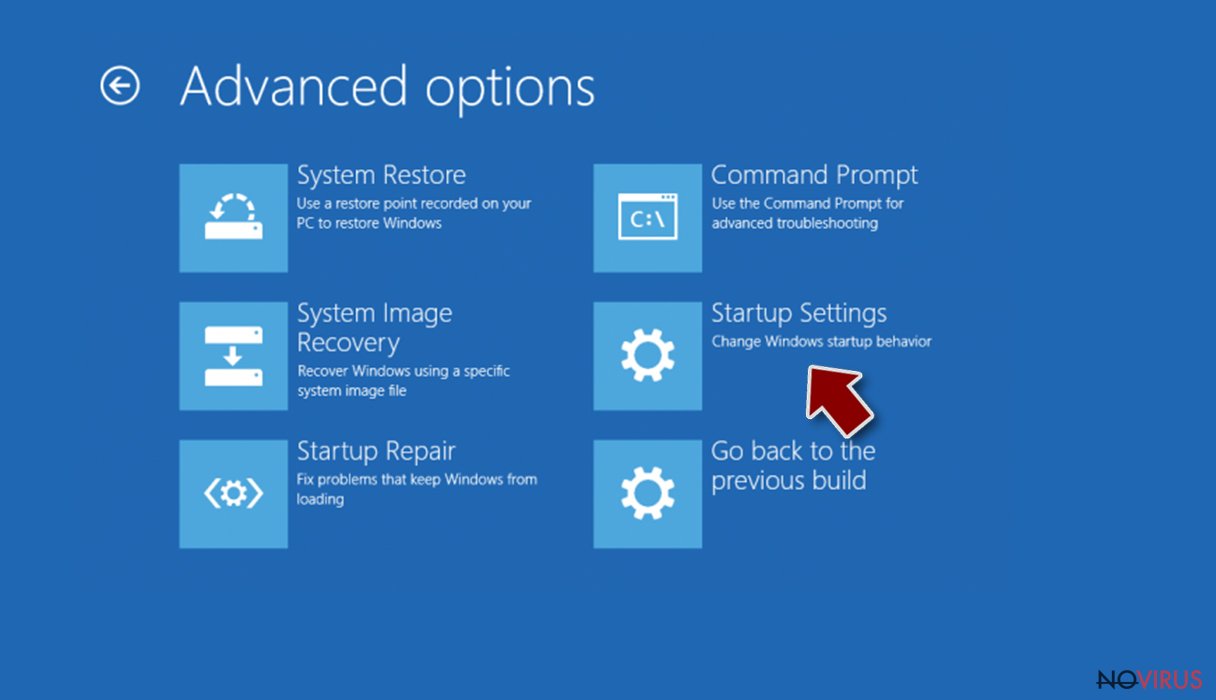
- Press Restart.
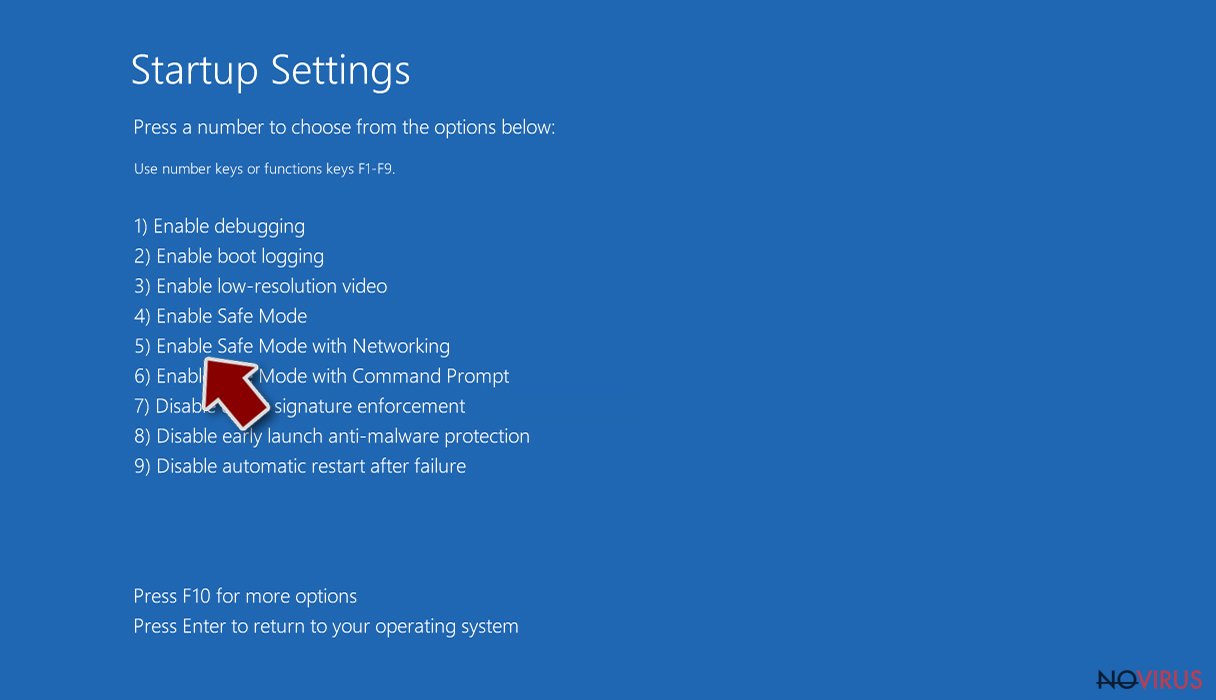
- Choose 5) Enable Safe Mode with Networking.
Step 2. End questionable processes
You can rely on Windows Task Manager that finds all the random processes in the background. When the intruder is triggering any processes, you can shut them down:
- Press Ctrl + Shift + Esc keys to open Windows Task Manager.
- Click on More details.
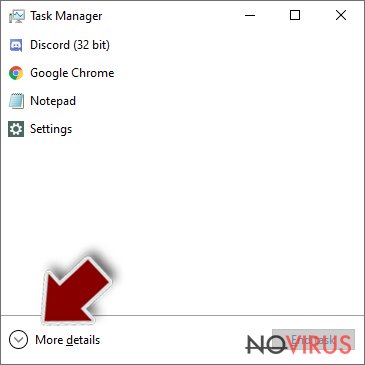
- Scroll down to Background processes.
- Look for anything suspicious.
- Right-click and select Open file location.
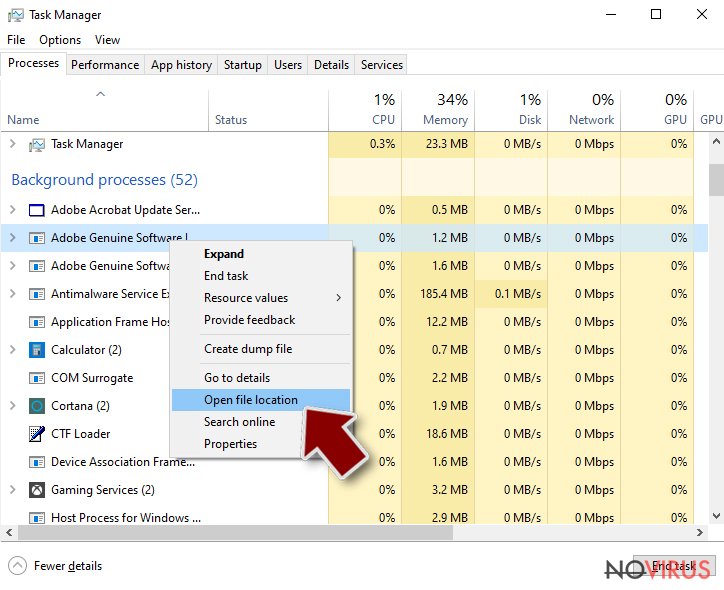
- Go back to the Process tab, right-click and pick End Task.
- Delete the contents of the malicious folder.
Step 3. Check the program in Startup
- Press Ctrl + Shift + Esc on your keyboard again.
- Go to the Startup tab.
- Right-click on the suspicious app and pick Disable.
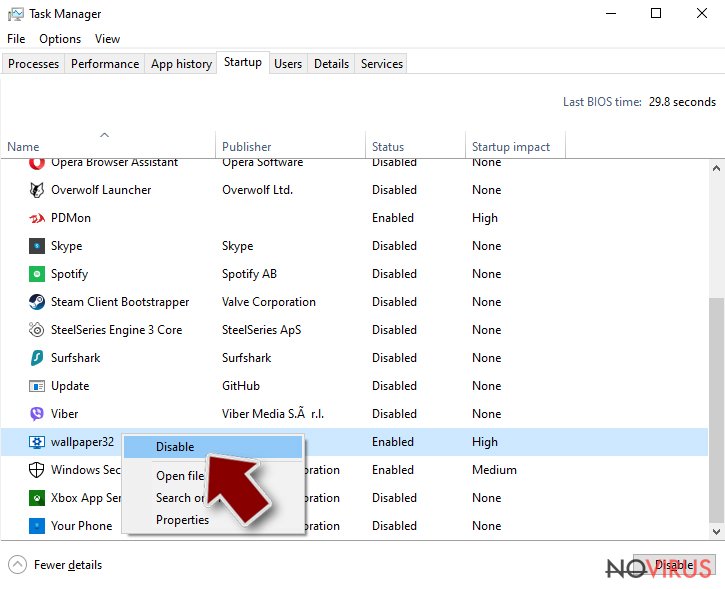
Step 4. Find and eliminate virus files
Data related to the infection can be hidden in various places. Follow the steps and you can find them:
- Type in Disk Cleanup in Windows search and press Enter.
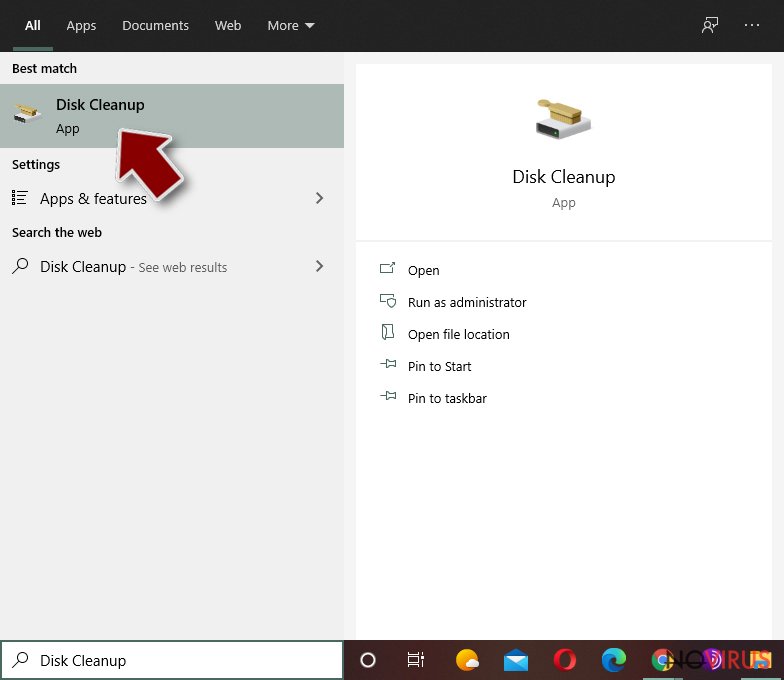
- Select the drive (C: is your main drive by default and is likely to be the one that has malicious files in) you want to clean.
- Scroll through the Files to delete and select the following:
Temporary Internet Files
Downloads
Recycle Bin
Temporary files - Pick Clean up system files.
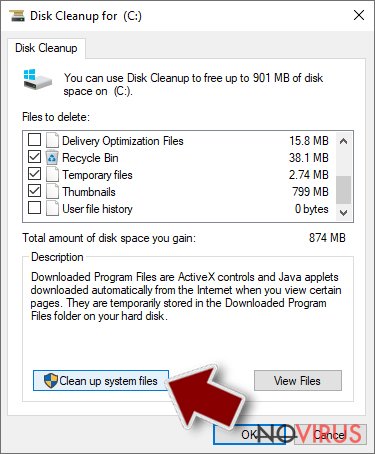
- You can also look for other malicious files hidden in the following folders (type these entries in Windows Search and press Enter):
%AppData%
%LocalAppData%
%ProgramData%
%WinDir%
After you are finished, reboot the PC in normal mode.
Eliminate AES-NI using System Restore
If the previous method did not work and you still cannot install security software, try System Restore method:
-
Step 1: Restart your computer in Safe Mode with Command Prompt
Windows 7 / Vista / XP- Go to Start → Shutdown → Restart → OK.
- As soon as your computer starts, start pressing F8 key repeatedly before the Windows logo shows up.
-
Choose Command Prompt from the list

Windows 10 / Windows 8- Click on the Power button at the Windows login screen, and then press and hold Shift key on your keyboard. Then click Restart.
- Then select Troubleshoot → Advanced options → Startup Settings and click Restart.
-
Once your computer starts, select Enable Safe Mode with Command Prompt from the list of options in Startup Settings.

-
Step 2: Perform a system restore to recover files and settings
-
When the Command Prompt window appears, type in cd restore and press Enter.

-
Then type rstrui.exe and hit Enter..

-
In a new window that shows up, click the Next button and choose a restore point that was created before the infiltration of AES-NI and then click on the Next button again.


-
To start system restore, click Yes.

-
When the Command Prompt window appears, type in cd restore and press Enter.
Bonus: Restore your files
Using the tutorial provided above you should be able to eliminate AES-NI from the infected device. novirus.uk team has also prepared an in-depth data recovery guide which you will also find above.If you do not have data backups, we highly recommend trying these additional data recovery methods that might help to get back at least some of your files.
There are a couple of methods you can apply to recover data encrypted by AES-NI:
Data Recovery Pro might help to decrypt files encrypted by AES-NI virus
Data Recovery Pro is famous for restoring deleted, corrupted and some of the encrypted files. Hence, if you should give this tool a try:
- Download Data Recovery Pro;
- Install Data Recovery on your computer following the steps indicated in the software’s Setup;
- Run the program to scan your device for the data encrypted by AES-NI ransomware;
- Recover the data.
Restore files encrypted by AES-NI ransomware using Previous Windows Versions feature
Follow these steps to restore the most important files. However, this method only works if System Restore function has been enabled before ransomware attack.
- Right-click on the encrypted document you want to recover;
- Click “Properties” and navigate to “Previous versions” tab;
- In the “Folder versions” section look for the available file copies. Choose the desired version and press “Restore”.
ShadowExplorer might help to restore files encrypted by AES-NI ransomware virus too
If AES-NI malware did not delete Shadow Volume Copies of the targeted files, you have another alternative to restore your data:
- Download Shadow Explorer (http://shadowexplorer.com/);
- Install Shadow Explorer on your computer following the instructions in the software’s Setup Wizard;
- Run the program. Navigate to the menu on the top-left corner and select a disk containing your encrypted files. Look through the available folders;
- When you find the folder you want to recover, right-click it and select “Export”. Also, choose where the recovered data will be stored.
AES-NI decrypter is not available yet
It is strongly recommended to take precautions and secure your computer from malware attacks. To protect your PC from AES-NI and other dangerous viruses, you should install and keep a powerful malware removal tool, for instance, FortectIntego, SpyHunter 5Combo Cleaner or Malwarebytes.
How to prevent from getting ransomware
A proper web browser and VPN tool can guarantee better safety
As online spying becomes an increasing problem, people are becoming more interested in how to protect their privacy. One way to increase your online security is to choose the most secure and private web browser. But if you want complete anonymity and security when surfing the web, you need Private Internet Access VPN service. This tool successfully reroutes traffic across different servers, so your IP address and location remain protected. It is also important that this tool is based on a strict no-log policy, so no data is collected and cannot be leaked or made available to first or third parties. If you want to feel safe on the internet, a combination of a secure web browser and a Private Internet Access VPN will help you.
Reduce the threat of viruses by backing up your data
Due to their own careless behavior, computer users can suffer various losses caused by cyber infections. Viruses can affect the functionality of the software or directly corrupt data on your system by encrypting it. These problems can disrupt the system and cause you to lose personal data permanently. There is no such threat if you have the latest backups, as you can easily recover lost data and get back to work.
It is recommended to update the backups in parallel each time the system is modified. This way, you will be able to access the latest saved data after an unexpected virus attack or system failure. By having the latest copies of important documents and projects, you will avoid serious inconveniences. File backups are especially useful if malware attacks your system unexpectedly. We recommend using the Data Recovery Pro program to restore the system.







